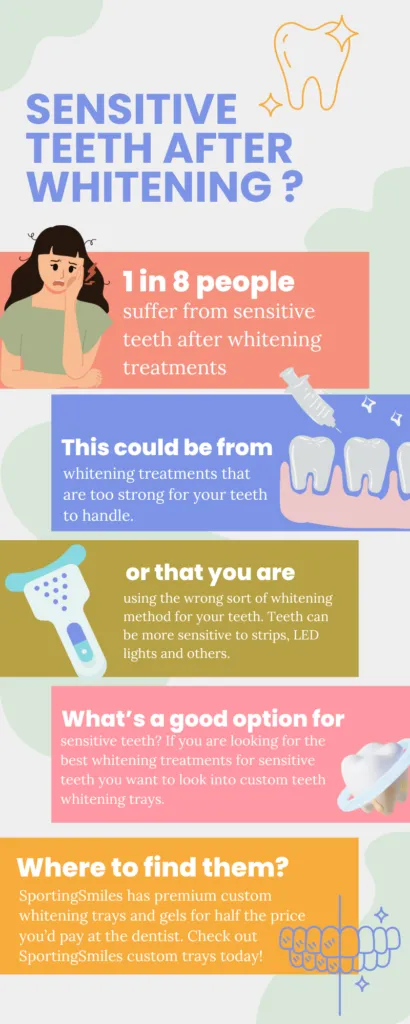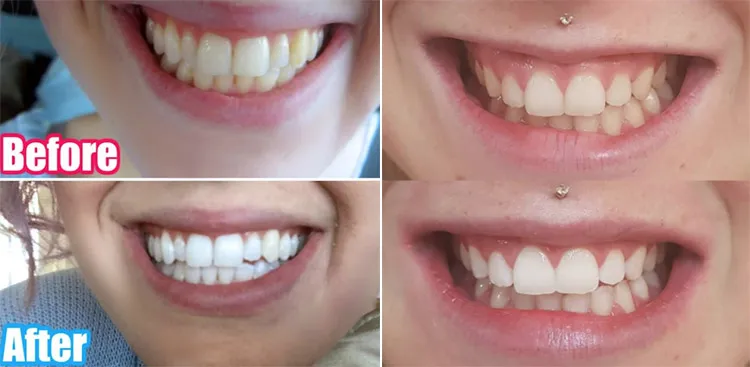Understanding Post-Whitening Sensitivity
Teeth whitening is a popular cosmetic procedure, but it can sometimes lead to increased sensitivity. This sensitivity is often temporary, but it can be uncomfortable. Understanding why your teeth become sensitive after whitening is the first step in managing the issue. This guide will explore the causes of sensitivity, common symptoms, and, most importantly, effective strategies to alleviate discomfort and maintain a bright, healthy smile. By following these tips, you can enjoy the benefits of a whiter smile with minimal sensitivity.
What Causes Sensitivity After Whitening
The primary cause of sensitivity after teeth whitening is the bleaching agents used in the process. These agents, typically hydrogen peroxide or carbamide peroxide, penetrate the enamel to break down stains. This process can temporarily dehydrate the teeth and irritate the nerves within the teeth, leading to sensitivity. The intensity of the sensitivity can vary depending on the concentration of the whitening agent, the duration of the treatment, and the individual’s natural tooth sensitivity. Certain individuals might have pre-existing conditions, such as thin enamel or receding gums, that can make them more susceptible to sensitivity.
The Whitening Process and Tooth Sensitivity

During a teeth whitening treatment, the bleaching agents work by oxidizing the stain molecules present in the enamel and dentin. This process can create microscopic pores in the enamel, allowing the whitening agent to reach the inner layers of the tooth. This action can cause the nerves in the teeth to become exposed and irritated, leading to sensitivity. The sensitivity is usually most pronounced shortly after the whitening treatment and gradually decreases as the teeth rehydrate and the enamel remineralizes. Understanding the science behind teeth whitening helps you appreciate why sensitivity is a common side effect and how to best manage it.
Common Symptoms of Sensitivity
The symptoms of teeth sensitivity after whitening can range from mild discomfort to sharp, intense pain. The most common symptoms include sharp, shooting pains when consuming cold or hot food or drinks. Some individuals may experience a dull ache or throbbing sensation in their teeth. Sensitivity can also occur when exposed to air, such as during breathing or when eating. The intensity of the symptoms can vary from person to person, with some experiencing only a brief twinge while others feel significant pain. If you experience severe or persistent pain, consult your dentist.
Top 5 Tips to Reduce Sensitivity
Use Sensitivity Toothpaste

Sensitivity toothpastes are specially formulated to reduce tooth sensitivity. These toothpastes contain ingredients like potassium nitrate, which helps block the transmission of pain signals to the brain. Using sensitivity toothpaste can provide noticeable relief within a few days or weeks. It is recommended to start using sensitivity toothpaste a week or two before teeth whitening to prepare your teeth. You can also continue to use it after the procedure to manage any sensitivity. Consistency is key: use it twice daily to maintain its protective effects.
How Sensitivity Toothpaste Works
Sensitivity toothpastes work in two main ways. First, they often contain potassium nitrate, which penetrates the tooth and blocks the pain signals from the nerves to the brain. Second, some toothpastes contain ingredients that help to fill or block the tiny tubules in the dentin, which can reduce the flow of fluids that cause sensitivity. By blocking these pathways, sensitivity toothpaste can significantly reduce the discomfort associated with sensitive teeth. Choose a sensitivity toothpaste that has been clinically proven to be effective.
Application Tips for Sensitivity Toothpaste
For best results, apply sensitivity toothpaste to your toothbrush and brush gently for about two minutes, ensuring that you reach all areas of your teeth. Avoid vigorous brushing, as this can exacerbate sensitivity. After brushing, do not rinse your mouth immediately. Instead, spit out any excess toothpaste and allow the remaining toothpaste to stay in contact with your teeth for a few minutes to maximize its effectiveness. This allows the active ingredients to work longer. You can also apply a small amount of toothpaste directly to the sensitive areas with your finger.
Avoid Acidic Foods and Drinks

Acidic foods and drinks can erode the enamel, increasing tooth sensitivity. After teeth whitening, your teeth are more vulnerable, so it is essential to avoid these items. This will give your teeth the best chance to recover and rebuild their natural defenses. Avoiding these items temporarily can provide significant relief and help your teeth to recover from the whitening treatment.
The Impact of Acid on Sensitive Teeth
Acidic substances can dissolve the minerals in tooth enamel, making it thinner and more porous. This erosion exposes the underlying dentin, which contains tiny tubules that lead to the nerve center of the tooth. When these tubules are exposed, they can transmit sensations of pain and sensitivity to the nerves more easily. Avoiding acidic foods and drinks helps protect the enamel, allowing it to remineralize and reduce sensitivity. Consider the pH level of your food and drink, aiming to minimize exposure to low pH items.
Foods and Drinks to Avoid
Common acidic foods and drinks to avoid include citrus fruits (lemons, oranges, grapefruits), carbonated beverages (soda, sparkling water), fruit juices, vinegar-based dressings, and sour candies. Also, consume foods such as tomatoes, pickles, and wine in moderation. Opt for neutral or alkaline foods like dairy products, bananas, and cooked vegetables. Make sure to drink plenty of water to help wash away any acids and promote saliva production, which helps to neutralize acids in the mouth. This will protect your teeth after whitening.
Use Fluoride Treatments

Fluoride is a mineral that strengthens tooth enamel and reduces sensitivity. It can help to remineralize the enamel, making it more resistant to acid erosion. Using fluoride treatments can provide significant relief and help protect your teeth from future sensitivity. Consider using fluoride treatments after teeth whitening to maximize protection.
Benefits of Fluoride for Sensitive Teeth
Fluoride strengthens tooth enamel by incorporating itself into the enamel structure, making it more resistant to acid attacks. Fluoride also helps to block the tiny tubules in the dentin, reducing the transmission of pain signals. Fluoride treatments can help alleviate the symptoms of sensitivity, making it a valuable tool in managing post-whitening discomfort. Using fluoride can provide long-term protection for your teeth and improve your overall oral health. Fluoride helps you to maintain your white teeth while also helping your teeth recover from whitening treatments.
Types of Fluoride Treatments
There are several types of fluoride treatments available. Fluoride toothpaste, as mentioned, is an excellent option for daily use. Your dentist may also recommend a high-concentration fluoride rinse or gel. Professional fluoride treatments, applied in the dental office, offer a higher concentration and more immediate relief. Your dentist might apply a fluoride varnish directly to your teeth. These treatments can be particularly beneficial after teeth whitening to accelerate remineralization. Discuss with your dentist what type of fluoride treatment is right for you.
Consider Over-the-Counter Pain Relief

If you experience significant sensitivity, over-the-counter pain relievers can help. Non-steroidal anti-inflammatory drugs (NSAIDs), like ibuprofen, can reduce pain and inflammation. Acetaminophen can also help manage pain. Be sure to follow the dosage instructions and consult with your doctor or pharmacist if you have any questions or concerns, or if you are taking other medications. Over-the-counter pain relievers can provide temporary relief while your teeth recover and adjust to the whitening treatment.
Safe Pain Relief Options
When using over-the-counter pain relievers, it is essential to follow the recommended dosage. Ibuprofen and acetaminophen are generally safe for short-term use, but excessive use can lead to side effects. Be aware of potential side effects and consult your doctor if you experience any adverse reactions. If the pain persists or worsens, contact your dentist for advice. They can assess the situation and recommend additional treatments. The correct application of pain relievers can help to lessen the pain and improve your comfort levels.
When to Consult a Dentist
While most sensitivity after teeth whitening is temporary and resolves on its own, it is important to know when to seek professional advice. If your sensitivity is severe, persistent, or accompanied by other symptoms like gum pain, swelling, or a bad taste in your mouth, consult your dentist. Your dentist can determine if there are any underlying dental issues contributing to the sensitivity and provide appropriate treatment. Early intervention is essential to prevent more severe problems. Your dentist can also offer professional treatments, like fluoride applications or desensitizing agents.
Proper Oral Hygiene Practices
Maintaining good oral hygiene is crucial for managing sensitivity and preserving your teeth’s health. Following a proper oral hygiene routine can significantly reduce the risk of experiencing sensitivity. By practicing good oral hygiene, you are helping to protect your teeth.
Gentle Brushing Techniques
Use a soft-bristled toothbrush and brush your teeth gently, using small circular motions. Avoid brushing too hard, as this can wear down enamel and make your teeth more sensitive. Brush for two minutes, twice a day, to remove plaque and bacteria effectively. Focus on cleaning all surfaces of your teeth, including the front, back, and chewing surfaces. Be extra gentle around the gumline, as this area is particularly prone to sensitivity. Replacing your toothbrush every three months will help ensure effective cleaning. By using proper techniques, you will be helping your teeth and gums.
Flossing and Mouthwash Considerations
Flossing daily is essential to remove food particles and plaque from between your teeth, where your toothbrush cannot reach. Use a gentle flossing technique to avoid irritating your gums. Mouthwash can help to further clean your mouth and freshen your breath, but avoid alcohol-based mouthwashes, as they can exacerbate sensitivity. Consider using a fluoride mouthwash to help strengthen your enamel. Always consult your dentist for advice regarding flossing and mouthwash for your specific needs. This practice will help you to maintain a healthy mouth.
Long-Term Solutions and Prevention
Professional Whitening Alternatives
If you experience severe sensitivity or want to avoid it altogether, consider alternatives to traditional teeth whitening. Your dentist can offer professional whitening treatments that may be less likely to cause sensitivity. Additionally, alternatives like veneers or dental bonding may provide a whiter smile without the same level of sensitivity. Discuss your options with your dentist to determine which solution is best for you. These alternatives will give you a brighter smile while also giving you peace of mind.
Maintaining a White Smile with Reduced Sensitivity
To maintain a white smile without triggering sensitivity, focus on preventive measures. Use sensitivity toothpaste regularly and avoid acidic foods and drinks, as mentioned previously. If you have whitening treatments, space them out to give your teeth time to recover. You can also use whitening toothpaste with low abrasiveness. By making smart choices, you can keep a bright smile and healthy teeth at the same time.
Regular Dental Check-ups
Regular dental check-ups are critical for maintaining good oral health and preventing sensitivity. Your dentist can identify any underlying dental issues and provide early treatment. They can also offer professional cleanings and apply fluoride treatments. Schedule check-ups and cleanings every six months or as recommended by your dentist. During your visit, discuss your concerns about sensitivity and whitening treatments. By working with your dentist, you can enjoy a beautiful smile while maintaining healthy teeth and gums. Regular check-ups and consistent dental care will help protect your teeth.
